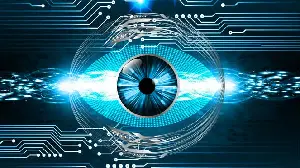About computer vision technology in food science
Published:
 Computer vision technology is a field of study that involves the development of algorithms and systems that enable computers to interpret and understand visual data. This includes the ability to analyze and understand images and videos, and to extract meaning and information from them. Computer vision technology is used in a wide range of applications, including robotics, image and video analysis, and machine learning. It is based on techniques from fields such as computer science, engineering, and mathematics, and involves the use of machine learning algorithms, image processing techniques, and other advanced methods to analyze and interpret visual data.
Computer vision technology is a field of study that involves the development of algorithms and systems that enable computers to interpret and understand visual data. This includes the ability to analyze and understand images and videos, and to extract meaning and information from them. Computer vision technology is used in a wide range of applications, including robotics, image and video analysis, and machine learning. It is based on techniques from fields such as computer science, engineering, and mathematics, and involves the use of machine learning algorithms, image processing techniques, and other advanced methods to analyze and interpret visual data.
Computer vision technology is used in food science to analyze and interpret images and videos of food products and processes. This includes applications such as the automatic inspection of food products for quality and safety, the analysis of food processing operations to improve efficiency and yield, and the development of systems for automating the sorting and grading of food products. In these and other applications, computer vision technology is used to extract meaningful information from images and videos of food products, such as the size, shape, color, and texture of the products. This information is then used to inform decision-making and improve the quality and efficiency of food production and processing.
There are several benefits to using computer vision technology in food science, including:
Improved efficiency and productivity: Computer vision technology can be used to automate the inspection and analysis of food products and processes, leading to increased efficiency and productivity.
Enhanced quality and safety: Computer vision technology can be used to automatically detect defects and contaminants in food products, improving the overall quality and safety of the products.
Greater accuracy: Computer vision systems can analyze images and videos of food products and processes with a high degree of accuracy, providing more reliable and consistent results than manual inspection methods.
Improved decision-making: Computer vision technology can provide valuable insights and information about food products and processes, enabling more informed decision-making in the food industry.
Enhanced traceability: Computer vision technology can be used to track and trace food products throughout the production and distribution process, improving the overall traceability of the food supply chain.
There are several challenges and limitations to the use of computer vision technology in food science:
Cost: The development and implementation of computer vision systems can be costly, particularly for small and medium-sized businesses.
Complexity: Computer vision technology involves the use of complex algorithms and systems, which can be difficult to understand and implement for non-technical users.
Data quality: The effectiveness of computer vision systems depends on the quality of the data they are trained on and the accuracy of the results they produce, which can be a challenge to ensure.
Limited flexibility: Computer vision systems may not be able to adapt to new or unusual situations, and may require additional training and programming to handle these situations.
Ethical considerations: The use of computer vision technology in food science raises ethical considerations, such as the potential for automation to replace human workers and the potential for the technology to be used for surveillance or other purposes.
There are many examples of the use of computer vision technology in food science, including:
Quality control and inspection: Computer vision systems are used to automatically inspect food products for defects and contaminants, improving the overall quality and safety of the products.
Food processing: Computer vision technology is used to analyze and optimize food processing operations, such as the sorting and grading of food products, leading to improved efficiency and yield.
Food product development: Computer vision systems are used to analyze the appearance and sensory properties of food products, enabling the development of new and improved products.
Food traceability: Computer vision technology is used to track and trace food products throughout the production and distribution process, improving the overall traceability of the food supply chain.
Consumer applications: Computer vision technology is used in consumer applications such as food identification and recommendation systems, which can help consumers make more informed food choices.
There are several tools and technologies used for computer vision in food science, including:
Machine learning algorithms: A set of algorithms that enable computers to learn and improve their performance based on data, used to analyze and interpret images and videos in computer vision applications.
Image processing techniques: A set of techniques for manipulating and analyzing images, used to extract information and features from images in computer vision applications.
Computer vision libraries and frameworks: A set of tools and libraries for building and working with computer vision systems, such as OpenCV and TensorFlow.
Hardware: A range of hardware is used for computer vision applications, including cameras and sensors for capturing images and videos, and specialized processors and hardware accelerators for analyzing and processing the data.